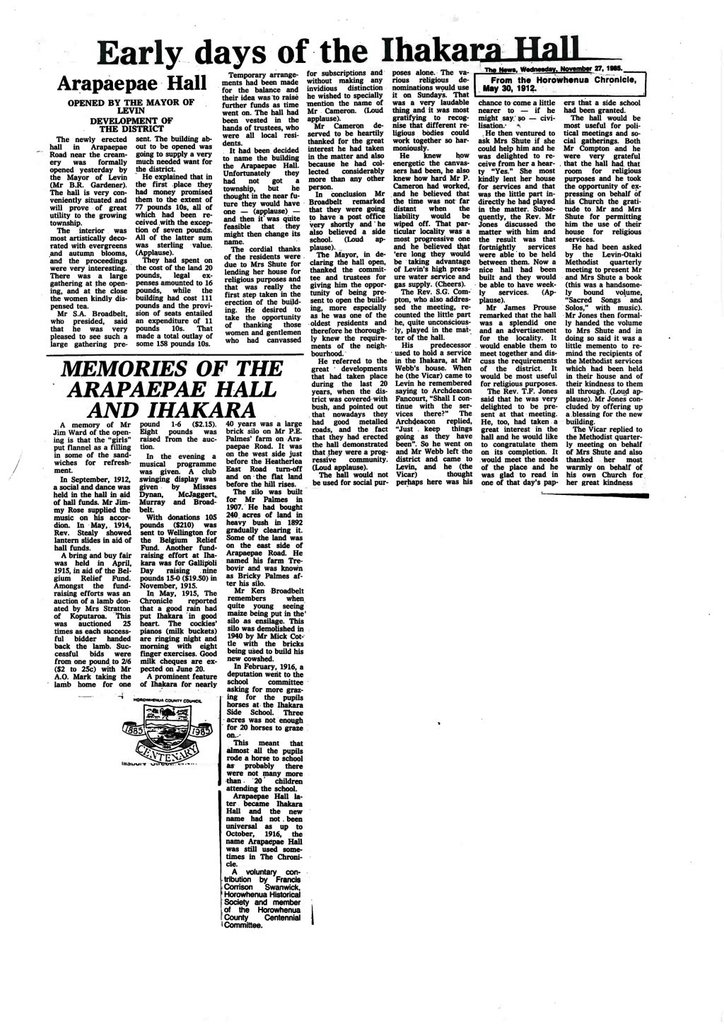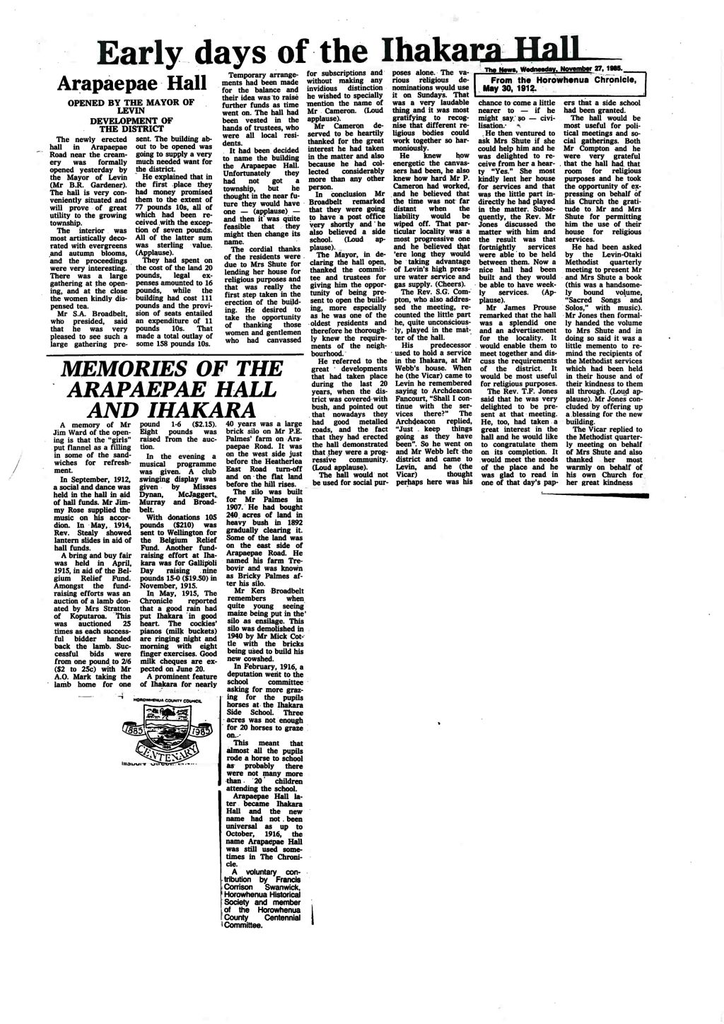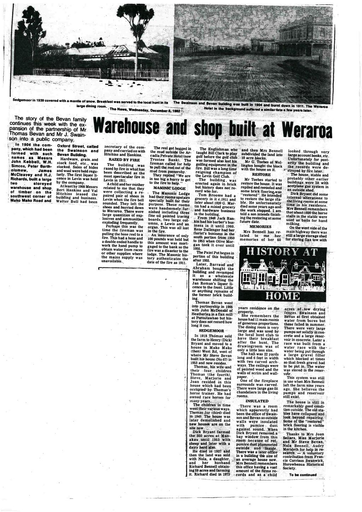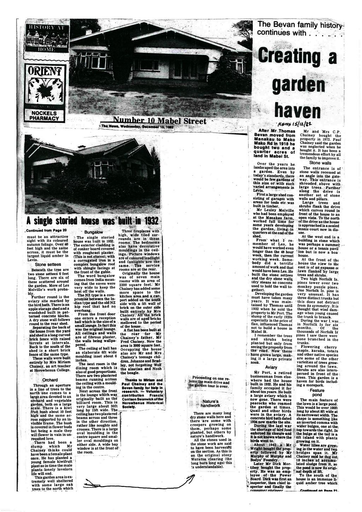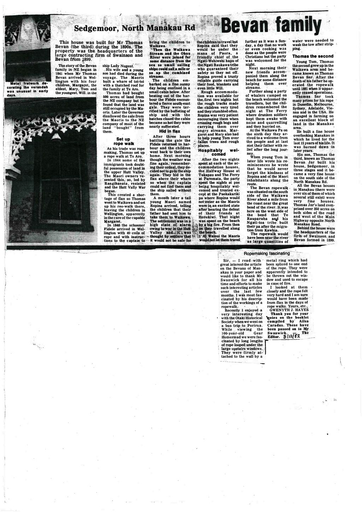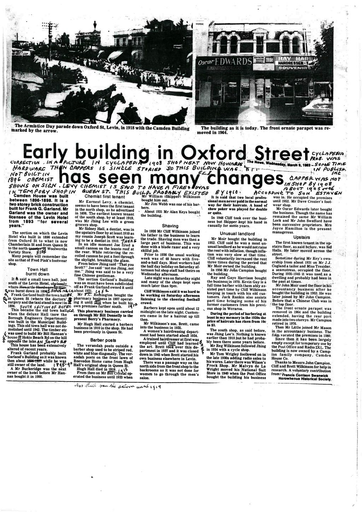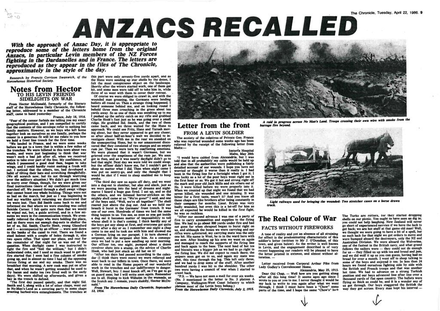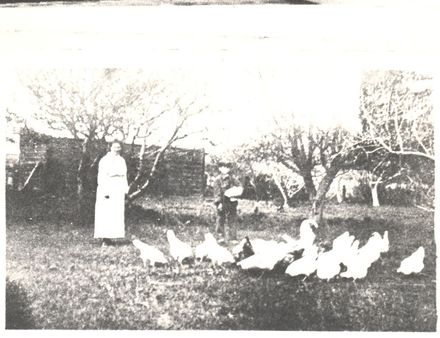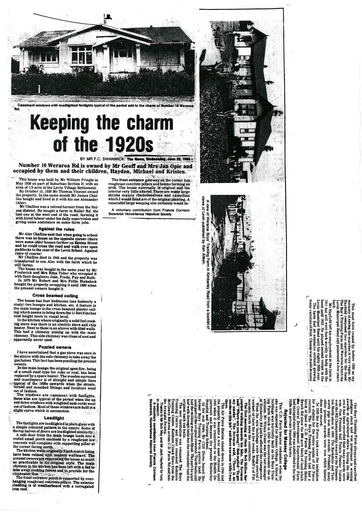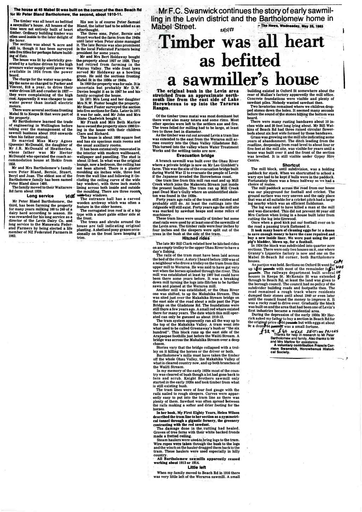Memories of the Arapaepae Hall and Ihakara
- Description
A memory of Mr Jim Ward of the opening is that the “girls” put flannel as a filling in some of the sandwiches for refreshment.
In September, 1912, a social and dance was held in the hall in aid of hall funds. Mr Jimmy Rose supplied the music on his accordion. In May, 1914, Rev. Stealy showed lantern slides in aid of hall funds.
A bring and buy fair was held in April, 1915, in aid of the Belgium Relief Fund. Amongst the fund-raising efforts was a auction of a lamb donated by Mrs Stratton of Koputaroa. This was auctioned 25 times as each successful bidder handed back the lamb. Successful bids were from one pound to 2/6 ($2 to 25c) with Mr A.O. Mark taking the lamb home for one pound 1-6 ($2.15). Eight pounds was raised from the auction.
In the evening a musical programme was given. A club swinging display was given my Misses Dynan, McJaggert, Murray and Broadbelt.
With donations, 105 pounds ($210) was sent to Wellington for the Belgium Relief Fund. Another fund-raising effort at Ihakara was for Gallipoli Day raising nine pounds fifteen shillings ($19.50) in November, 1915.
In May, 1915, The Chronicle reported that a good rain had put Ihakara in good heart. The cockies’ pianos (milk buckets) are ringing night and morning with eight finger exercises. Good milk cheques are expected on June 20.
A prominent feature of Ihakara for nearly 40 years was a large brick silo on Mr P.E. Palmes’ farm on Arapaepae Road. It was on the west side just before the Heatherlea East Road turn-off and on the flat land before the hill rises.
The silo was build for Mr Palmes in 1908. He had bought 240 acres of land in heavy bush in 1892 gradually clearing it. Some of the land was on the east side of Arapaepae Road. He named his farm Trebovir and was known as Bricky Palmes after his silo.
Mr Ken Broadbent remembers when quite young seeing maize being put in the silo as ensilage. This silo was demolished in 1940 by Mr Mick Cottle with the bricks being used to build his new cowshed.
In February, 1916, a deputation went to the school committee asking for more grazing for the pupils' horses at the Ihakara Side School. Three acres was not enough for 20 horses to graze on.
This meant that almost all the pupils rode a horse to school, as probably there were not many more than 20 children attending the school.
Arapaepae Hall later became Ihakara Hall and the new name had not been universal as up to October, 1916, the name Arapaepae Hall was still used sometimes in The Chronicle.
Identification
- Date
- November 27, 1985
Taxonomy
- Community Tags

